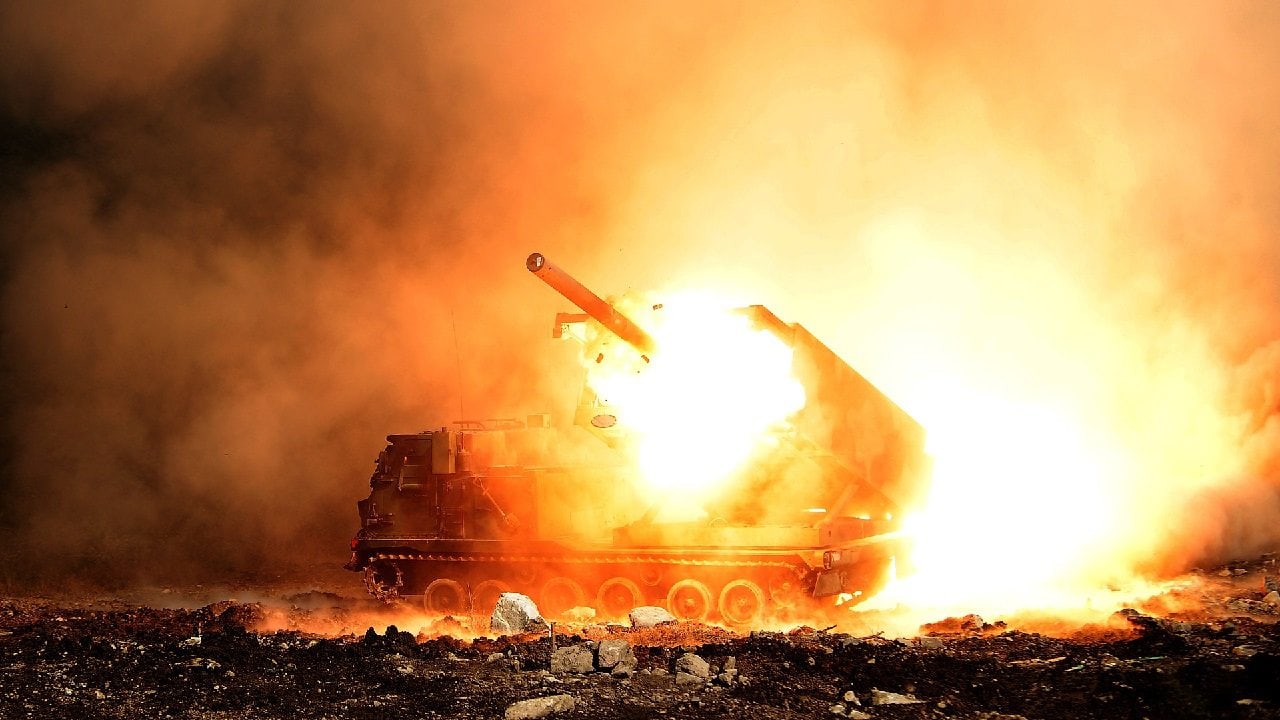What is MLRS and why does Ukraine want it so badly? President Biden published an op-ed with the New York Times last night. In response to international pressure, Biden promises to provide Ukraine with advanced rocket systems. “I’ve decided that we will provide the Ukrainians with more advanced rocket systems and munitions that will enable them to more precisely strike key targets on the battlefield in Ukraine,” Biden wrote.
With Russian forces bombarding eastern Ukraine and hoping to secure the Donbas, Ukraine has solicited international support for advanced rocket systems with greater range. Wishing to strike back against Russia, and retard Russian advances in the Donbas, Ukraine has repeatedly requested, specifically, that the U.S. send its the vaunted M270 Multiple Launch Rocket System (MLRS).
Ukraine had been quite public with its request. On May 26th, Ukraine’s Ministry of Defense tweeted a video of a Russian artillery attack, stating: “This is what the largest and most horrific war of the 21st century looks like. Ukraine is ready to strike back. To do this, we need NATO-style MLRS. Immediately.” The request came from Ukraine’s parliament, too.
Oleksandr Merezhko, the chair of Ukraine parliament’s foreign affairs committee, told Newsweek, “Russia is now using artillery extensively and ruthlessly. To counter this, to save the lives of our servicemen and civilians, we need MLRS.”
So, what is the MLRS exactly?
The M270 MLRS is a mobile, armored vehicle, which carries a multiple launch rocket system capable of firing surface-to-surface rockets, or MGM-140 ATACMS missiles. A Lockheed Martin design, the MLRS launcher carries 12 rockets, arranged in two six-rocket pods, or alternatively, two MGM-140 missiles. The launcher sits atop an M993 Carrier vehicle, which is a stretched variant of the Bradley Fighting Vehicle chassis. Impressively, the system is highly automated, capable of self-loading and self-aiming.
The MLRS’s fire control computer re-aims the launcher between rounds, which can be fired individually, or in sets of two-to-12. Whether firing rockets or MGM-140 missiles, the MLRS can empty its entire munitions load in under one minute. Typically, the MLRS “shoots-and-scoots,” meaning the vehicle relocates immediately after firing, to avoid a counter-attack.
The primary benefit of the MLRS to the Ukrainian people is the weapon’s range. The Ukrainians began the war with limited artillery capabilities, relying on Soviet-era howitzers with a range of just 10 miles. Then, the U.S. sent the Ukraine 90 M777 NATO artillery pieces – which boosted Ukraine’s artillery range to about 25 miles. The M270 will represent another huge improvement in Ukraine’s artillery range.
Depending on the ammunition used, the MLRS can fire weapons from a distance of 20 to 185 miles away, allowing Ukraine to target Russian forces while maintaining a relatively safer distance away. The MLRS’s range would allow Ukraine to strike targets in the Donbas region, where Russian forces are concentrating their efforts. Actually, if outfitted properly, the MLRS could allow Ukraine to hit targets within Russian territory.
However, the Biden administration has made it clear they will not supply Ukraine with rockets that can reach Russian territory. “We are not going to send to Ukraine rocket systems that can strike into Russia,” Biden said on Monday. Russia, naturally, would view the delivery of weapons capable of striking Russian territory as an escalation. Clearly, the Biden administration shares the concern that sending weapons with such range would indeed prove escalatory, with the potential to bring the US and NATO into direct conflict with Russia.
Harrison Kass is a Senior Defense Editor at 19FortyFive. An attorney, pilot, guitarist, and minor pro hockey player, he joined the US Air Force as a Pilot Trainee but was medically discharged. Harrison has degrees from Lake Forest College, the University of Oregon, and New York University. He lives in Oregon and regularly listens to Dokken.

